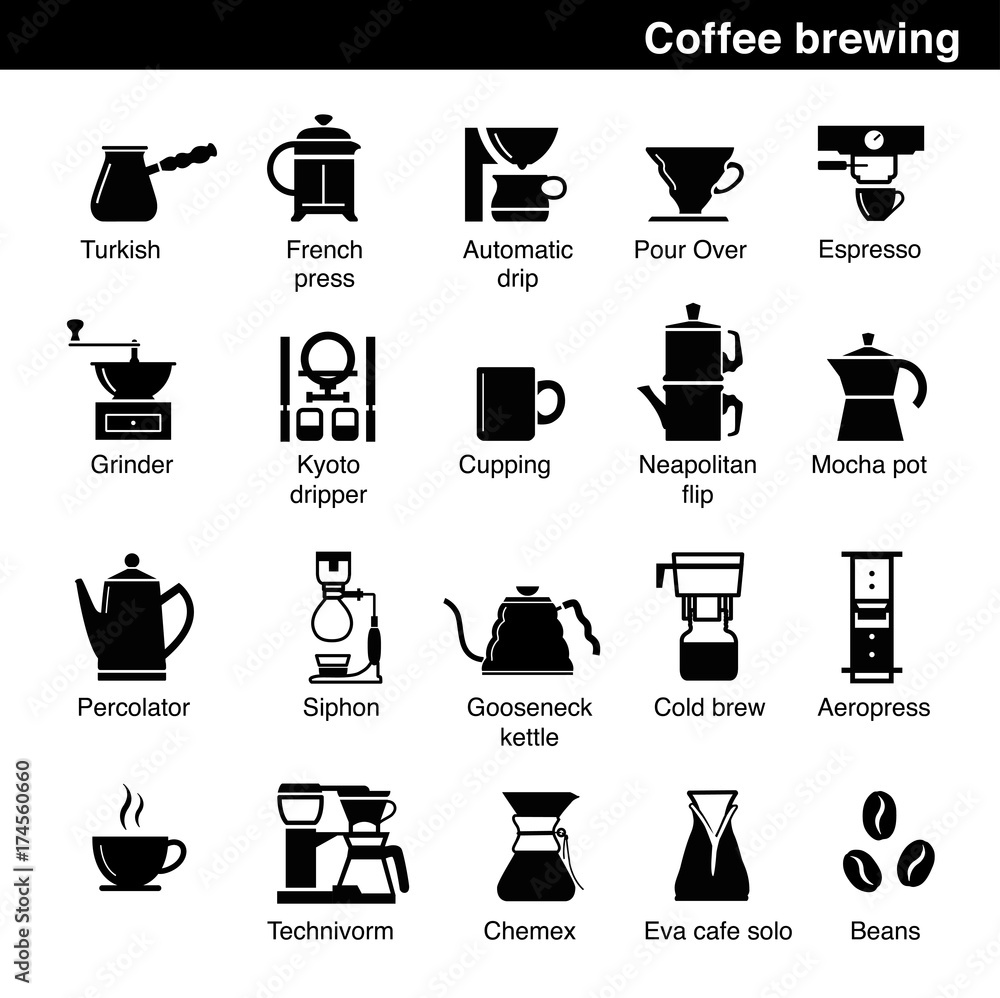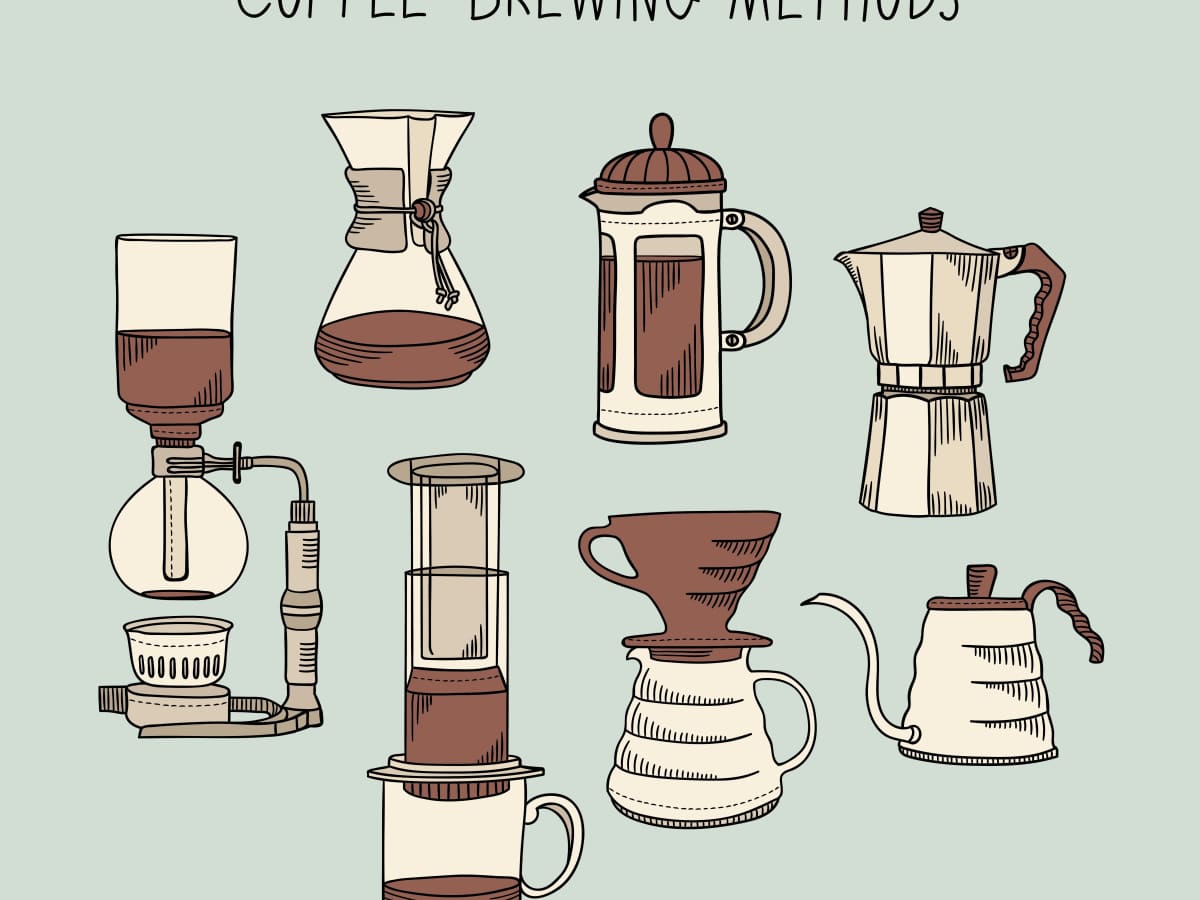Coffee Brewing Methods: Opening the Tricks to the Perfect Cup at Home
Coffee Brewing Methods: Opening the Tricks to the Perfect Cup at Home
Blog Article
The Science Behind Coffee Brewing: How Temperature Level and Time Affect Your Beverage
Understanding the scientific research behind coffee developing reveals that temperature level and time are not simple variables however crucial elements that determine the drink's flavor account and general quality. As we check out the subtleties of these components, the concern occurs: how can one efficiently balance temperature level and time to accomplish that excellent brew?
The Chemistry of Coffee Extraction
The chemistry of coffee removal digs right into the complex procedures that change raw coffee beans right into the fragrant beverage delighted in worldwide. This improvement mostly entails the solubility of numerous substances existing in the beans, which are affected by aspects such as work dimension, water quality, and the brewing technique employed.
Throughout the developing procedure, warm water works as a solvent, removing soluble substances, consisting of caffeine, sugars, lipids, and acids, from the coffee grounds. Each substance adds to the flavor profile, scent, and body of the last drink. Acids are accountable for tasty and brilliant notes, while oils add to an abundant mouthfeel.
The extraction procedure is not uniform; different compounds liquify at various rates. The initial stages of brewing essence acids and sugars, bring about a positive acidity, while extended extraction can lead to bitterness due to over-extraction of unwanted compounds. Understanding these chemical communications is important for optimizing developing strategies, as the equilibrium in between extraction time and water temperature level can substantially influence the overall top quality of the coffee. Eventually, mastering the chemistry of coffee removal is key to achieving a all-round and flavorful cup.
Perfect Brewing Temperatures
Locating the ideal brewing temperature is vital for opening the full possibility of coffee flavors and scents - coffee brewing methods. Research indicates that the optimum range for brewing coffee lies between 195 ° F to 205 ° F(90 ° C to 96 ° C) Within this variety, the removal procedure properly liquifies the preferable soluble substances in coffee beans, causing a delicious and balanced mug
Brewing at reduced temperatures, such as listed below 195 ° F(90 ° C ), might cause under-extraction, producing a weak and acidic mixture with low-key flavors. Alternatively, developing at temperatures exceeding 205 ° F(96 ° C) can cause over-extraction, producing a bitter and harsh taste because of the excessive dissolution of undesirable compounds, such as tannins.
Additionally, the excellent brewing temperature level can differ relying on the coffee bean kind and roast level. As an example, lighter roasts frequently gain from a little greater temperature levels to improve their complex taste profiles, while darker roasts may be much better suited to reduced temperature levels to minimize anger.
Eventually, keeping accuracy in developing temperature levels is critical for achieving a harmonious balance of tastes, ensuring that every cup of coffee supplies a gratifying sensory experience.
Influence of Brewing Time
Developing time plays an essential duty in identifying the flavor account and total top quality of coffee. The removal procedure, which affects the preference, aroma, and body of the drink, is largely dependent on how much time the coffee premises are in contact with water. Much shorter brewing times can result in under-extraction, bring about a weak or sour taste, as insufficient soluble compounds are dissolved. On the other hand, prolonged developing can result in over-extraction, where unwanted compounds are launched, resulting in a bitter or astringent taste.
Optimum developing time differs depending on the technique made use of and the grind dimension of the coffee. A French press typically needs regarding 4 mins, while espresso removal is generally completed within 25 to 30 seconds. It is necessary to adjust brewing time in conjunction with other variables, such as water temperature level and coffee-to-water ratio, to achieve the wanted taste account.
Recognizing the influence of brewing time makes it possible for coffee fanatics to refine their developing techniques, inevitably boosting the sensory experience of their cup (coffee brewing methods). With cautious focus to this variable, one can open the full this link possibility of the coffee, revealing its distinct qualities and subtleties
Developing Approaches and Their Effects

For example, techniques like French press and chilly mixture enable a longer steeping time, resulting in a fuller body and robust taste as a result of increased extraction of oils and soluble solids. Alternatively, espresso brewing makes use of high pressure and a much shorter removal time, producing a focused shot that emphasizes intense flavors and a rich crema.
Pour-over techniques, such as Chemex or V60, supply a more controlled removal procedure, enabling the brewer to manipulate circulation rate and water distribution, which can enhance brightness and clarity. Percolation techniques cycle water with the coffee grounds several times, leading to a stronger, frequently bitter taste.
Last but not least, making use of paper filters versus steel filters can likewise impact the final taste; paper filters usually produce a cleaner cup by trapping oils and great fragments, while metal filters enable more oils to go through, adding to a fuller mouthfeel - coffee brewing methods. Recognizing these nuances can boost the coffee experience dramatically
Tips for Developing Your Mixture
A well-executed brew can transform even the most basic coffee right into a remarkable experience. Grind the beans just before brewing to optimize freshness, guaranteeing the grind dimension matches your developing approach-- coarser for French press and finer for coffee.
Water quality plays a critical role; usage filteringed system water devoid of contaminations. The ideal brewing temperature varies in between 195 ° F and 205 ° F(90 ° C to 96 ° C ) As well warm can burn the coffee, while also trendy might under-extract tastes.
Timing is equally important. For immersion techniques, soaking for 3 to five mins is ideal, whereas drip approaches normally take around 5 minutes. Trying out brew times to discover your recommended toughness.

Conclusion
In recap, the detailed partnership in between temperature level and time is critical in the coffee brewing procedure. Comprehending these scientific principles empowers people to fine-tune their brewing techniques, eventually leading to a more well balanced and delightful coffee experience.
Understanding the science behind coffee developing reveals that temperature level and time are not simple variables but critical components that determine the beverage's taste account and total top quality. Understanding these chemical communications is vital for optimizing developing strategies, as the equilibrium in between removal time and water temperature can substantially affect the total quality of the coffee.Brewing time plays a critical role in determining the taste profile and total quality of coffee. By focusing on these elements-- bean high quality, grind dimension, water temperature, steeping time, and ratio-- you can elevate your coffee brewing process, resulting in a continually remarkable cup.
In recap, the you can try these out elaborate relationship in between temperature level her explanation and time is vital in the coffee developing process.
Report this page